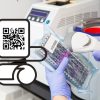Labeling regulations from the FDA and European Union (EU) are continuously changing to protect public health and improve patient safety. The Drug Supply Chain Security Act (DSCSA) enhances FDA’s ability to help protect consumers from exposure to drugs that may be counterfeit, stolen, contaminated or otherwise harmful. These requirements also improve detection and removal of potentially dangerous drugs from the drug supply chain to protect consumers.
FDA 21 CFR Part 312 (Clinical Trial Labeling) Section 312.6 contains requirements for the labeling of investigational new drugs intended for human use. Information accompanying clinical investigations of that drug is critical in ensuring the safety of participants.
FDA 21 CFR Part 11 (Electronic Records) applies to the research, manufacturing and distribution of medical products, and was established to protect public health and ensure accuracy of electronic medical records. It also enables organizations to reduce costs by using electronic records in lieu of paper.
FDA also requires a Unique Device Identifier (UDI), which adequately identifies medical devices sold in the U.S. market from manufacturing through distribution to patient use, which ultimately improves patient safety.
For devices on the European market, EU Medical Device Regulation (EU MDR) is designed to ensure public health and patient safety across Europe and to increase quality and transparency of medical devices in the healthcare supply chain through label design, approval and tracking standardization.
What’s Needed for Regulatory Compliance & Speed to Market
Compliance with the above-mentioned life sciences labeling regulations requires proper label design, security, traceability and version control. While labeling can be performed manually, there are several benefits to incorporating enterprise labeling solutions to ensure accuracy and label traceability. These include:
- Ability to design labels of all sizes with support for serialization, variable counters, HIBC (Health Industry Bar Code) and GS1 barcodes with human readable text.
- Mitigates errors with user groups, permissions and automatic data entry by integrating the labeling system with ERP (Enterprise Resource Planning) and other systems to generate lot number, serial number, expiration date and other data needed to meet regulatory requirements.
- Centralized control for traceability and visibility–capturing the who, what, where and when of your label printing operations in one database for complete audit trails and detailed reporting. This includes label approvals with electronic signatures.
- Establish automatic version control to access older versions of labels. Every draft is maintained so you can go back in time to access previous versions.
Users should be able to design, manage and print medical device, pharmaceutical, clinical trial, lab sample and any needed labels without calling IT. This allows companies to quickly respond to evolving regulations and the development or acquisition of a new product. Speed to market is not only about quickly making changes to labels but configuring the approval process to ensure approvals are done correctly the first time and unauthorized labels don’t make it into production.
Validation for Quality Assurance & Auditability
Labeling software validation is one way to ensure the tools you use when manufacturing or distributing medical and healthcare products are up to the task. In highly regulated industries, regulatory bodies such as the FDA and EU have guidelines related to process validation to confirm a company’s labeling processes will result in reliable outputs and meet quality standards.
This is done through Installation Qualification (IQ), Operational Qualification (OQ) and Performance Qualification (PQ) protocols to establish documented evidence that the software is correctly installed, operates according to requirements and performs safely. In each phase of the validation process, documents are compiled with detailed results of each qualification test.
IQ is the first step in the validation process. In this phase, you verify that the manufacturing equipment, in this case your barcode labeling software, meets the design specifications and has been correctly installed and configured according to requirements. IQ will include acceptance testing on items such as admin rights and user management, OS, disk space, license configuration and more.
OQ is the second step in the validation process. In this phase, you verify that the labeling software operates according to requirements defined in the IQ phase. You need to carry out tests for each software feature to validate that every part of the labeling system operates as intended at pre-set thresholds.
PQ is the third and last step in the validation process. In this phase, you verify performance stability by running the system several times under normal operating conditions to challenge its functionality and quality output. This will demonstrate if the labeling system and process produces outputs that conform to its requirements. Your process performance qualification protocol will feature verification and documentation that all equipment is working within the accepted range under real conditions.
An audit of your operation may be completed by the FDA for a variety of reasons, such as a routinely scheduled inspection or in response to a reported problem. It is in your, and your company’s, best interest to ensure you fully understand the FDA’s audit procedures and have the necessary documentation prepared in advance of any visits.
Medical Device Labeling Software Validation Case Study
Top Clean Injection, a subsidiary of Top Clean Packaging, specializes in the co-design and production of medical devices through the expert knowledge of plastic injection, assembly, sealing and packaging in clean controlled environments. As a medical device sub-contractor of approximately 250 products, Top Clean Injection must comply with specific standards and regulations, including EU MDR and UDI.
A validation case study[1] showed that enterprise label design and label management software supported their label traceability requirements and patient safety needs. IQ, OQ and PQ documentation was also key post-implementation. The study revealed that Top Clean Injection:
- Centralized their labeling and full reports on label changes, comments, revisions and prints.
- Expedited their compliance with industry standards in medical device manufacturing.
- Saved time and resources by accelerating validation of their labeling processes.
- Became audit-ready and compliant with FDA and EU requirements.
Only two Top Clean Injection employees were required in the validation of their labeling software from start to finish. What would have taken approximately two weeks of complete focus to prepare the validation templates and execute validation by multiple people, only took the two Top Clean Injection staff 1.5 days.
Keeping life sciences labeling compliant with various government, industry and supply chain requirements can be complex. Enterprise labeling systems can equip medical device companies with the tools to make compliant labeling accurate, efficient and scalable.
References:
[1] https://teklynx.com/en/support/learn/media-library/case-studies/top-clean-injection?utm_source=medtech_intelligence&utm_medium=media_relations&utm_campaign=life_sciences







